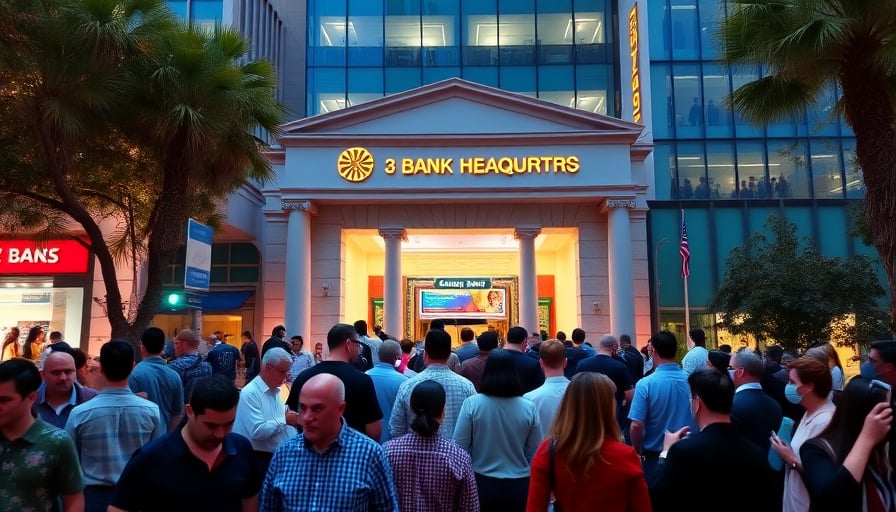Karur Vysya Bank Limited: Navigating the Aftermath of the Karur Stampede Amid Market‑Minded Movements
Karur Vysya Bank Limited (KVB), a mid‑cap player listed on the National Stock Exchange (NSE) and the Bombay Stock Exchange (BSE), has found itself at the nexus of a political‑social storm that could ripple through its financial trajectory. While the bank’s latest closing price of ₹225.95 (as of 12 Oct 2025) sits comfortably between its 52‑week high of ₹231.25 and low of ₹154.63, the market’s pulse is being shaken by events far beyond balance sheets.
1. Corporate Governance Under Scrutiny
On 14 Oct 2025, KVB submitted a Schedule of Analysts / Institutional Investors Meet / Conference Call to both the NSE and BSE. This regulatory filing, mandated under IRC:F48:168:343:2025, signals the bank’s intention to maintain transparency with its stakeholders amid external turbulence. The timing—mere days after the Supreme Court (SC) escalated the investigation into the Karur stampede—suggests an effort to reassure investors that KVB’s operations remain insulated from the political fallout.
The bank’s First and Final Call notice, also released on 14 Oct, underscores its ongoing capital‑raising activities. By issuing partly paid‑up equity shares on a rights basis, KVB aims to fortify its balance sheet with a fresh infusion of capital. In an environment where investor confidence can be volatile, such proactive capital management is prudent, if not essential.
2. The Karur Stampede: A Political Backdrop
The tragic incident at actor‑politician Vijay’s rally in Karur, which claimed 41 lives, has become a national conversation. The SC’s decision to transfer the probe to the Central Bureau of Investigation (CBI) on 13 Oct—supported by the AIADMK and BJP—has amplified the scrutiny on all entities connected, directly or indirectly, to the event. Although KVB has not been implicated in any wrongdoing, the proximity of the incident to its corporate name has elevated the risk of reputational damage.
The SC’s criticism of the Madras High Court (MHC) for its “lack of sensitivity” and the subsequent appointment of a three‑member panel headed by former SC judge Ajay Rastogi to oversee the CBI investigation reinforce the seriousness of the legal environment. For a financial institution, the perception of being embroiled in a political scandal can erode customer trust and trigger regulatory vigilance.
3. Market Implications
KVB’s market capitalization—₹203.53 billion—places it firmly within the mid‑cap segment of India’s banking sector. Its price‑earnings ratio of 10.975 reflects a valuation that investors may reassess given the current crisis. The bank’s share price has demonstrated resilience, maintaining a trajectory that stays above the 52‑week low even as the market digests the shock waves from Karur.
However, the mere act of a major political event occurring in the same city as a bank’s headquarters can have cascading effects: potential disruptions in banking operations, heightened regulatory scrutiny, and an increase in loan defaults if the economic fallout tightens credit conditions in the region. The bank’s risk management framework must therefore be tested under these unprecedented circumstances.
4. Strategic Response and Outlook
KVB’s decision to engage in a timely conference call and to issue a fresh equity call demonstrates an acute awareness of the need to keep investor sentiment stable. Yet, the bank must go beyond procedural compliance. Proactive stakeholder engagement—clarifying any possible linkage to the stampede, reaffirming adherence to ethical standards, and outlining robust risk mitigation measures—will be critical in preserving its standing.
From a financial perspective, the bank’s strong asset base and liquidity profile, coupled with a relatively modest P/E ratio, provide a buffer against short‑term market volatility. Nonetheless, the bank must remain vigilant, monitoring the progress of the CBI investigation and preparing contingency plans for any adverse regulatory developments.
In sum, Karur Vysya Bank Limited stands at a crossroads where corporate governance, reputational management, and market dynamics intersect. Its ability to navigate the storm will hinge on transparent communication, decisive action, and a steadfast commitment to its core banking principles.
